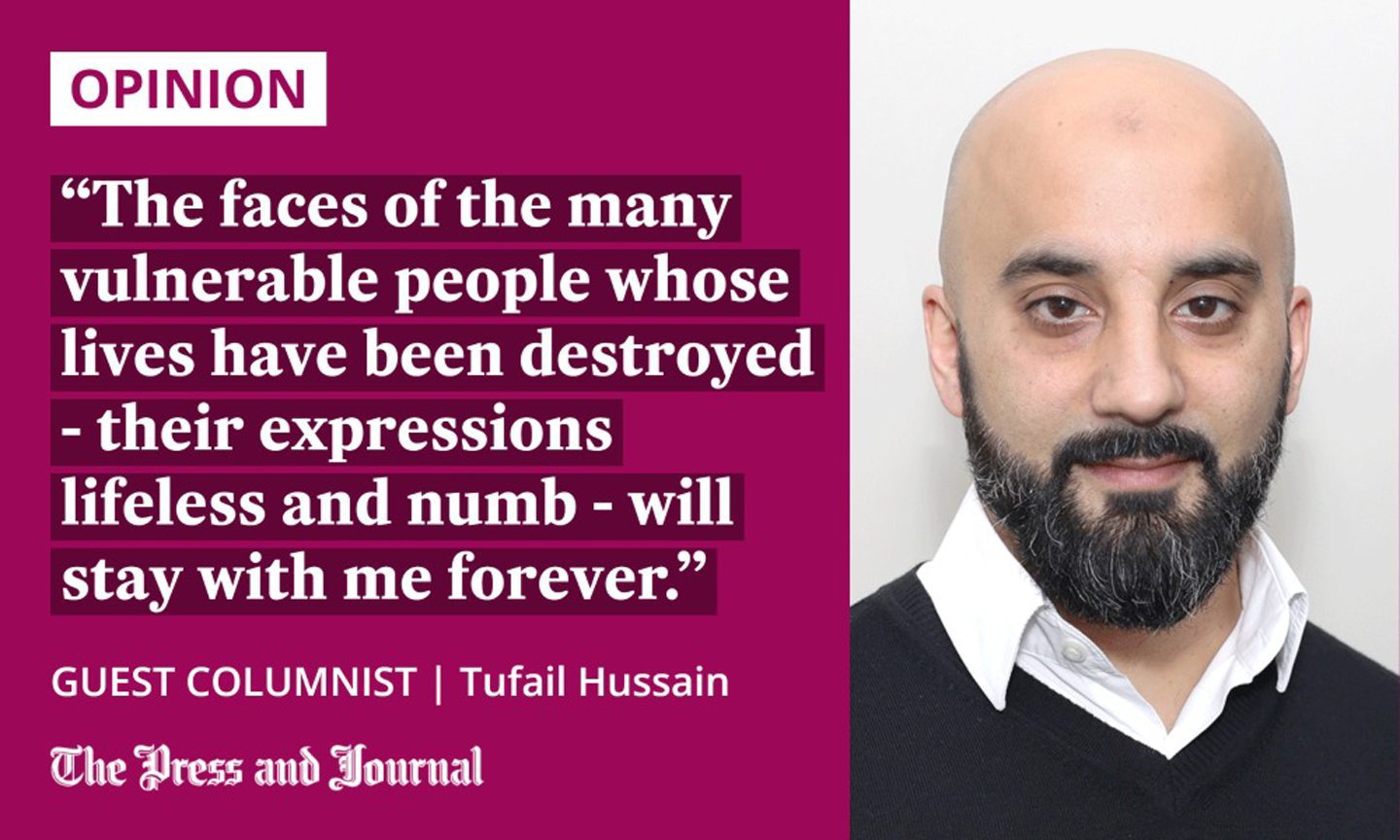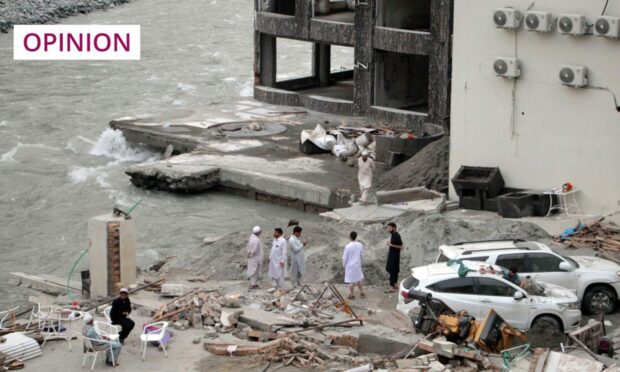The landscape of Pakistan is now barely recognisable.
Unprecedented torrential rains this monsoon season have devastated the country, and widespread flash floods continue to submerge homes, crops and livestock. As I report from the ground in Sindh – one of the most flood-affected districts in the region – I see the great injustice faced by vulnerable communities as they live out the catastrophic reality of the climate crisis.
This year, the country has experienced 2.9 times more rainfall than the 30-year normal average, and more than 90 districts are affected.

Before I arrived in Pakistan, it was difficult to communicate the magnitude of the floods with statistics and photos. I could not prepare myself for what I was about to witness as I stepped out of the vehicle and heard the relentless crashing of waves.
Here, I stood on previously lush farmland at least 70 miles from the coast, yet water now stretched as far as the eye could see – I could have been on the coast of the Arabian Sea.
According to the UN, the situation in Pakistan is likely to worsen, with heavy rains expected to add to the damage from more than two months of storms and flooding.
People urgently need clean water, food and medical treatment now. Donate:https://t.co/LjAgNYHFSs pic.twitter.com/FgODtw4v3i
— DEC (@decappeal) September 13, 2022
The faces of the many vulnerable people whose lives have been destroyed – their expressions lifeless and numb – will stay with me forever. Temporarily camped on the scarce bits of dry land remaining, those affected now face the loss of their homes and their lives as they knew them.
I was informed that every household in the area had at least one member falling sick. I’ve met families sleeping inches above rainwater in their home, and young boys with no choice but to swim through waist-level floodwater to find a clean source of water to drink from. I can only relay the unimaginable gravity of loss, confusion and injustice that is echoed across the faces of millions of people across Pakistan.
A health crisis is inevitable
The urgent concern now is the looming health crisis that is inevitable with the spread of waterborne diseases, including cholera and malaria. As we assess the environment, visit shelters and distribute urgent aid items, swarms of mosquitoes hover in every corner, increasing the dangers of disease in areas where displaced people have become overcrowded.
The climate emergency has hit Pakistan with no certainty of recovery
Fundraising initiatives have been incredible, and we thank the generosity of people in Scotland, who have supported the Disasters Emergency Committee’s (DEC) Pakistan Floods Appeal. We also thank the Scottish Government for allocating £500,000 to the appeal.
As well as fundraising efforts, I’d urge the global community to acknowledge the climate emergency and its devastating impacts on the least responsible. The climate emergency has hit Pakistan with no certainty of recovery. This disaster is not theirs; it is ours.
- You can show your support for the recovery efforts by donating to the DEC Pakistan Floods Appeal at dec.org.uk, or by calling 0370 60 60 900
Tufail Hussain is a DEC spokesperson and director of Islamic Relief

Conversation